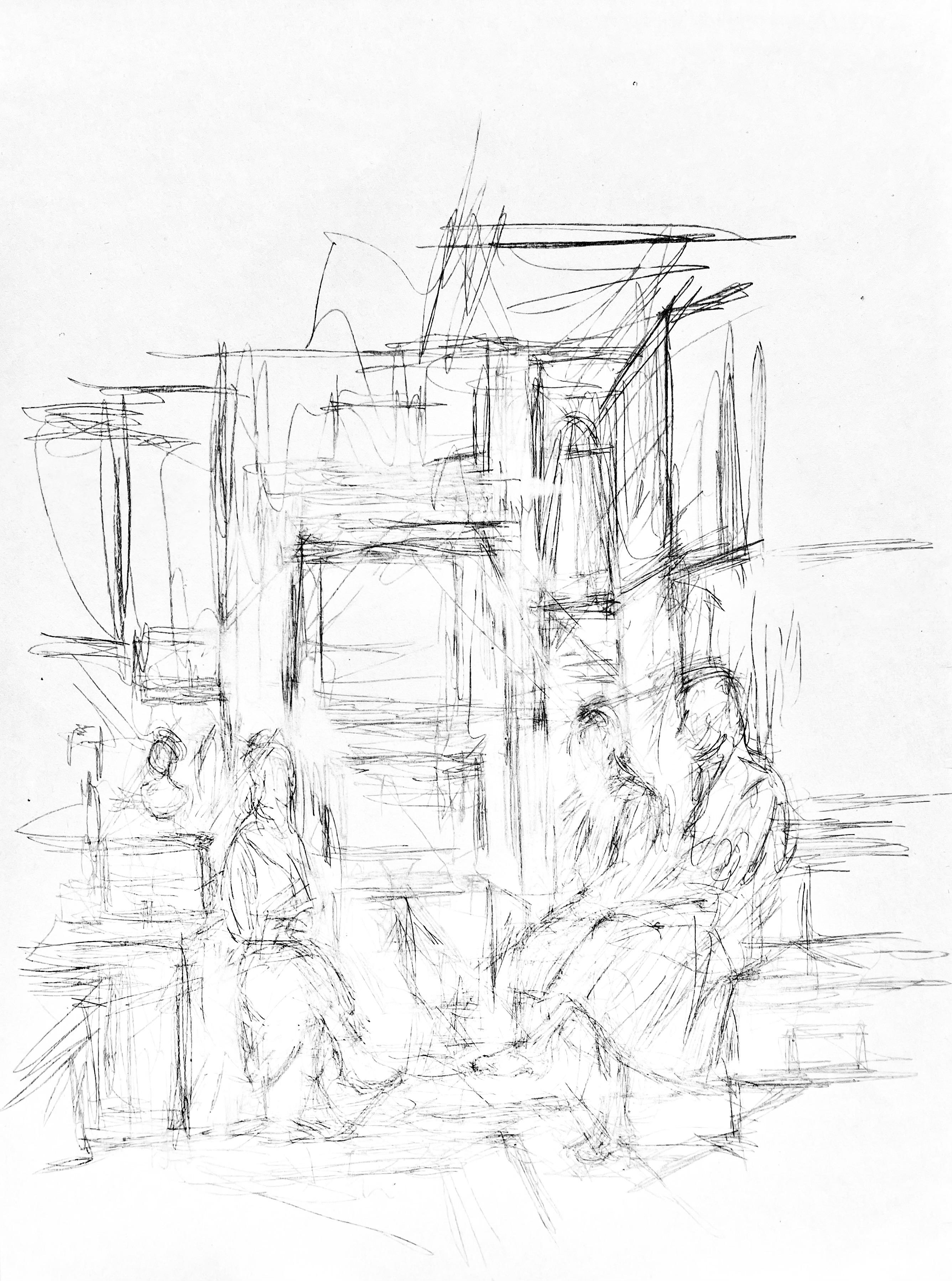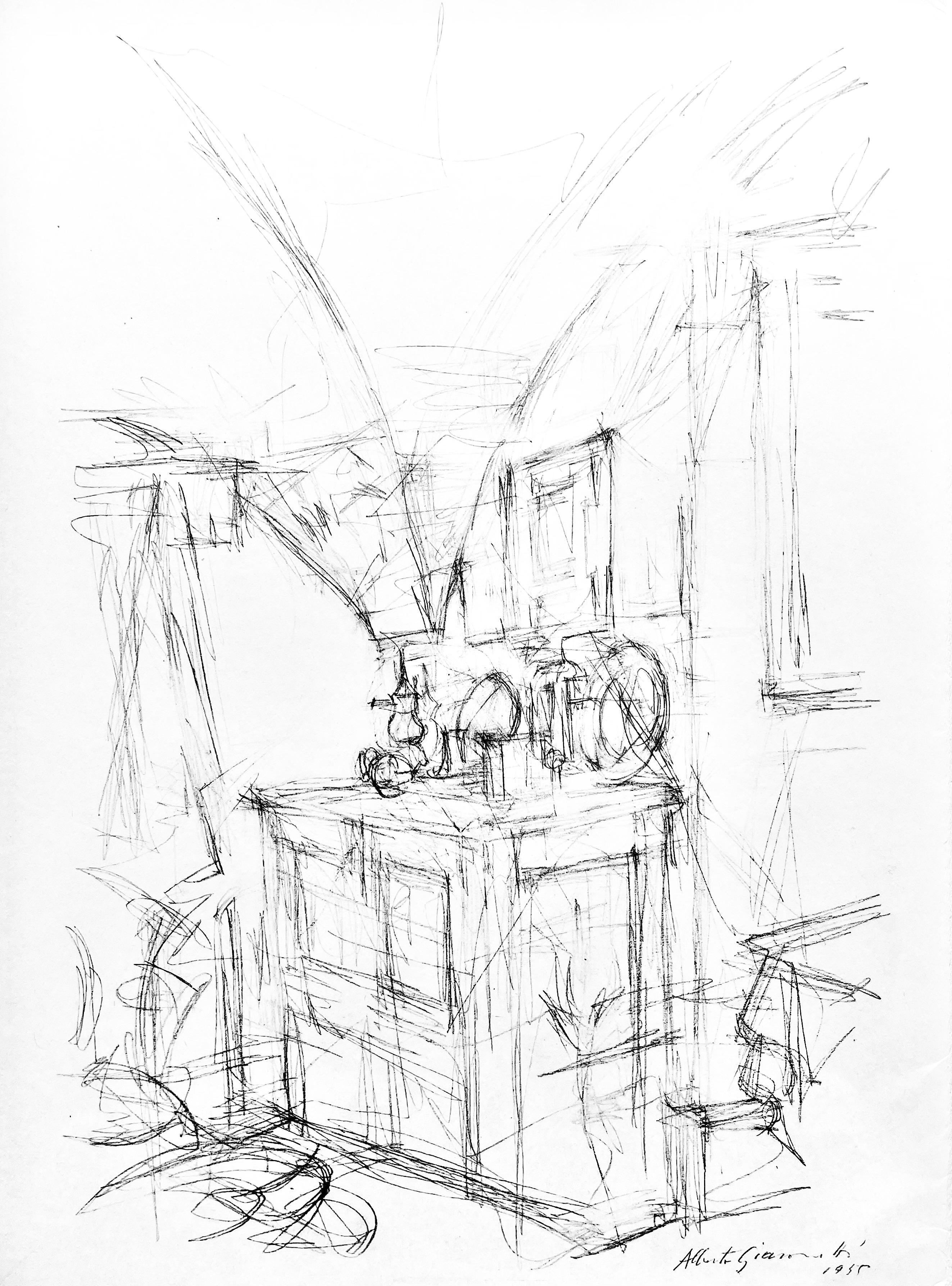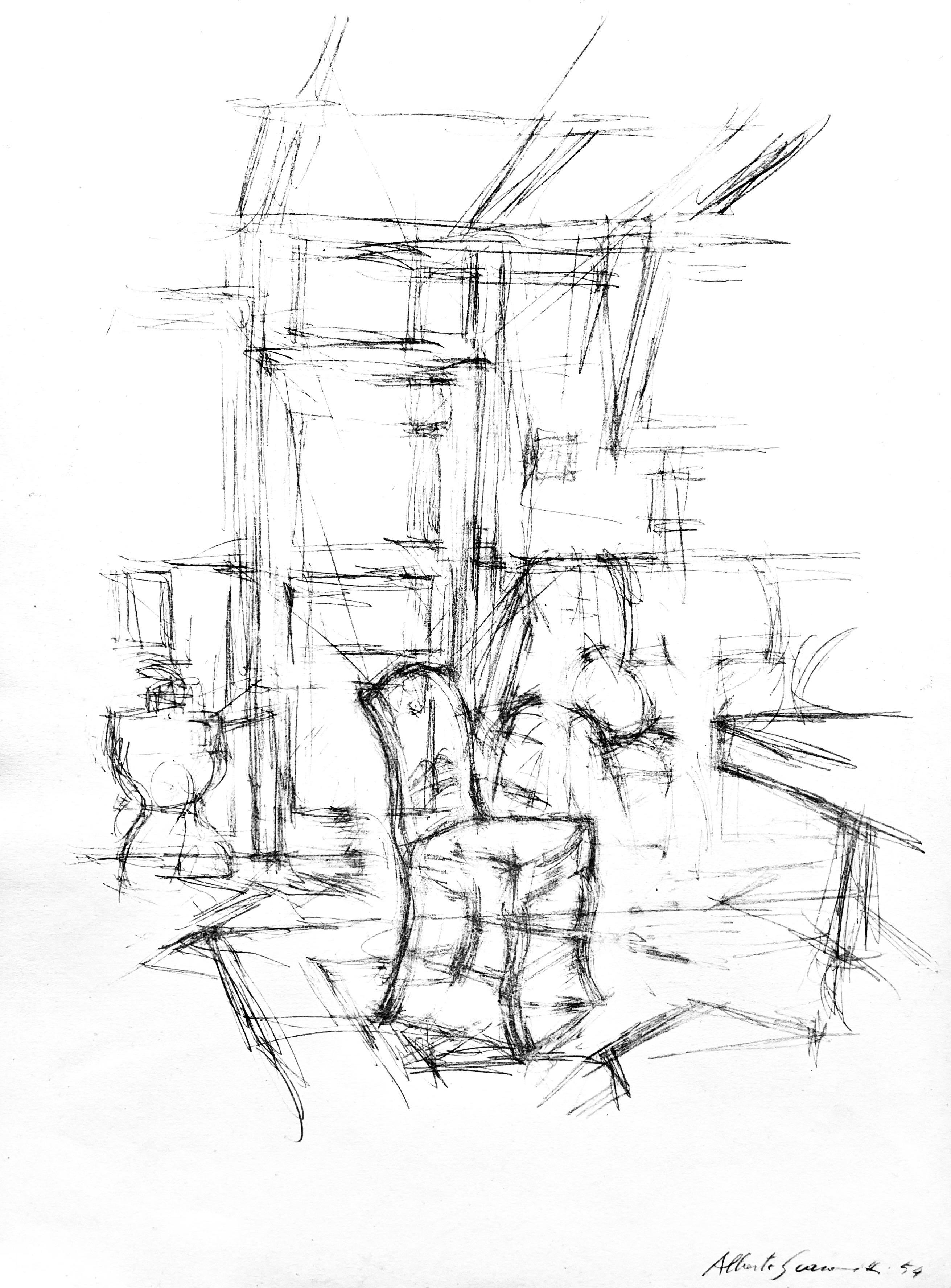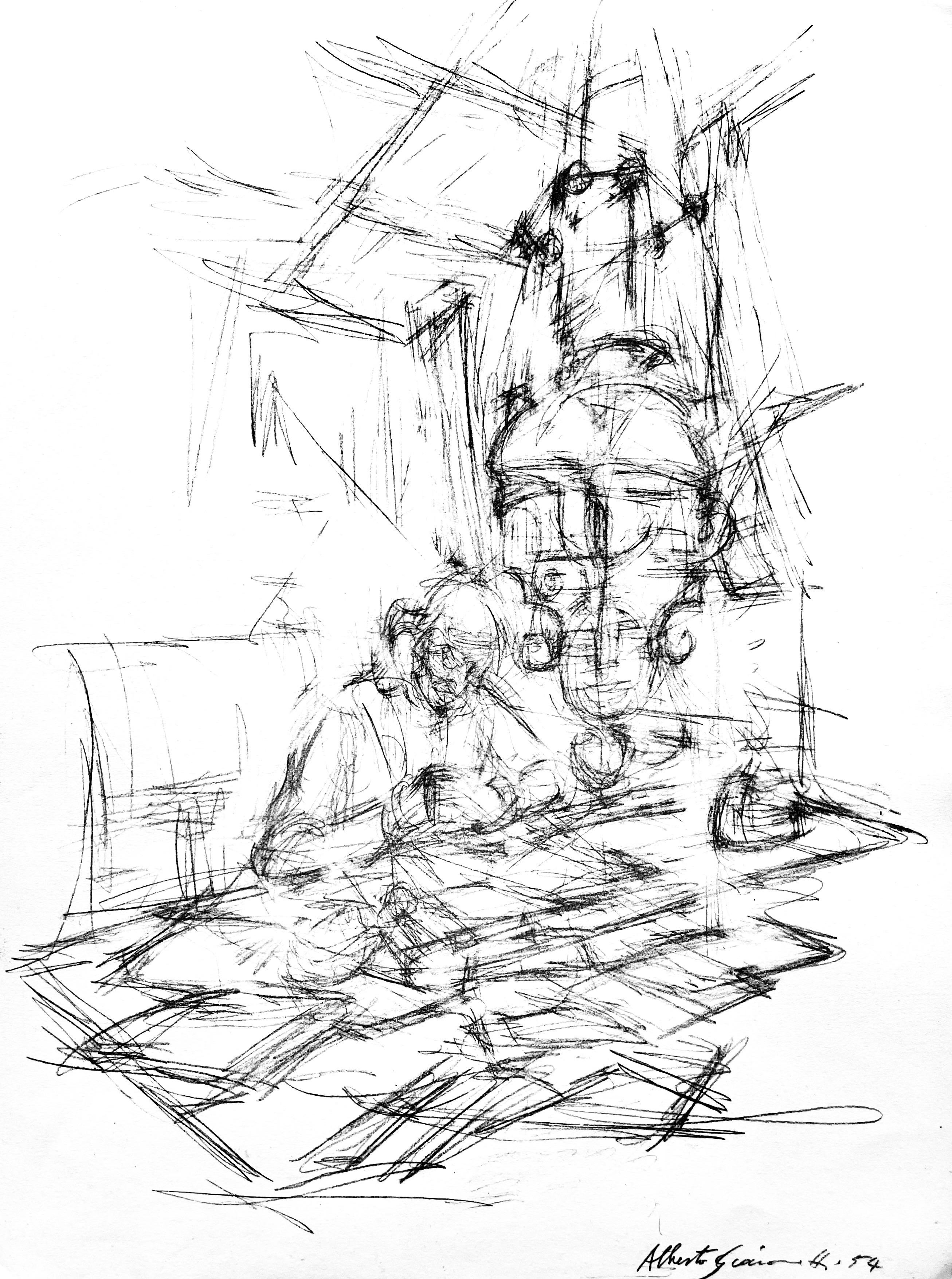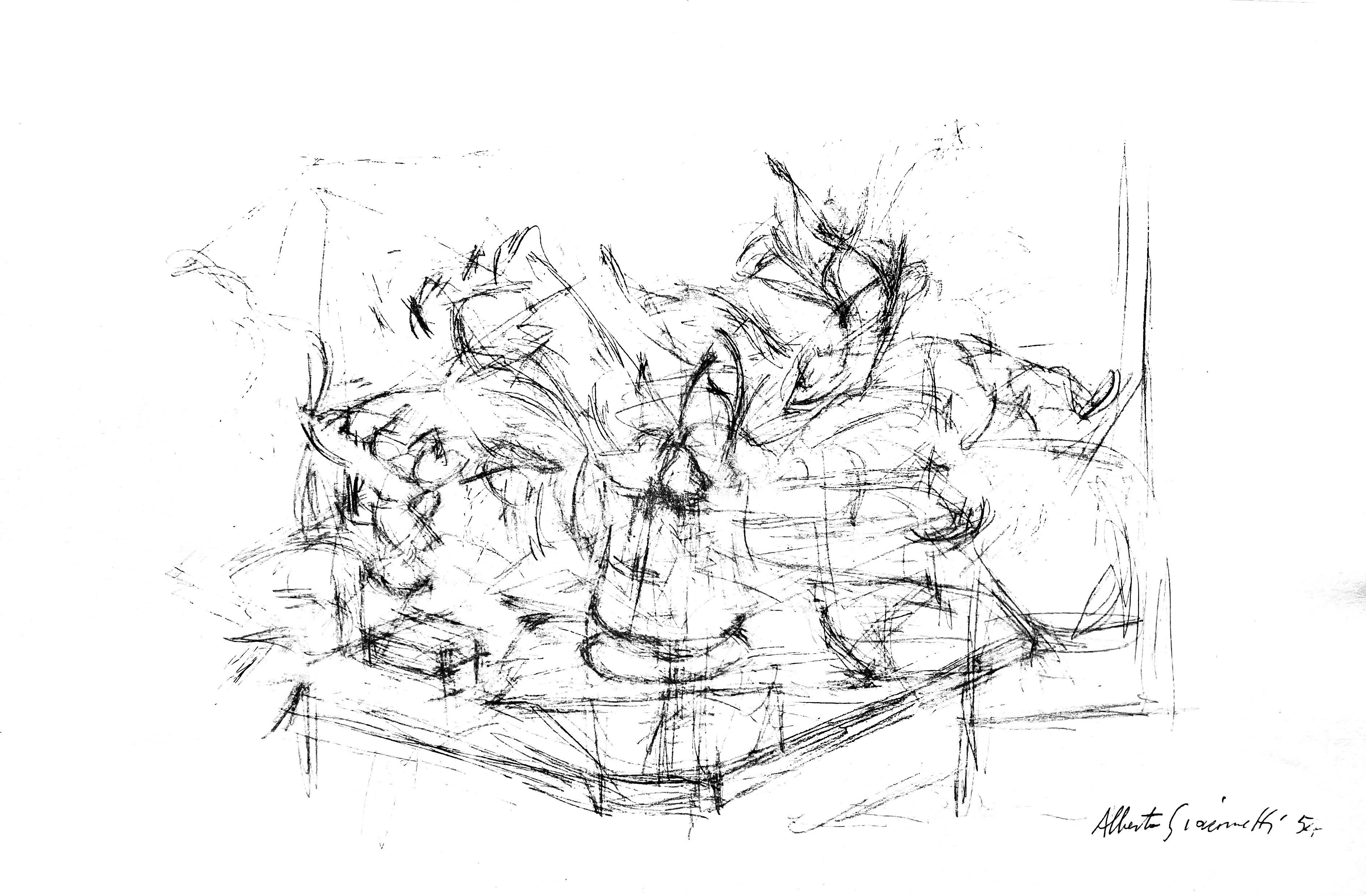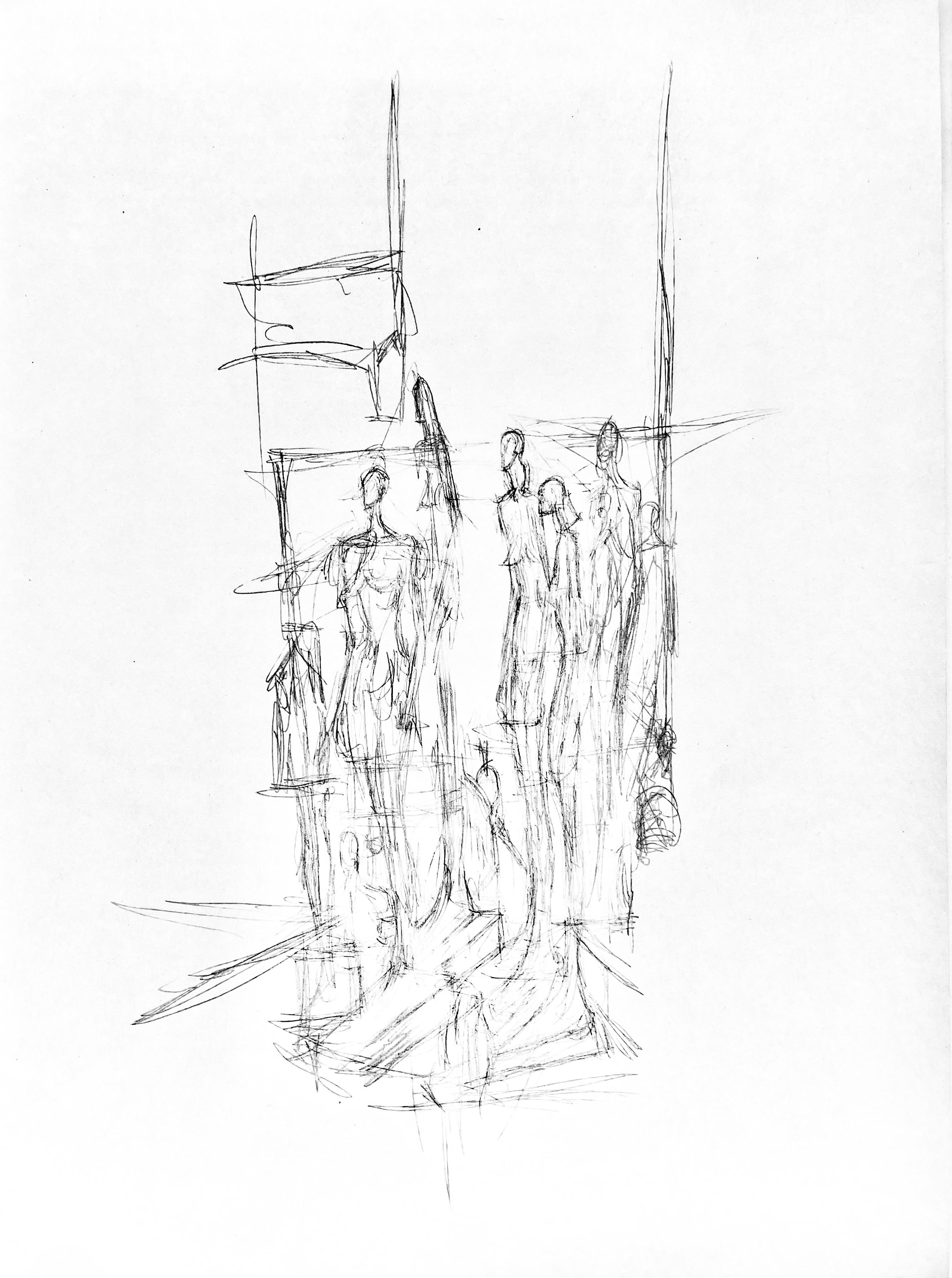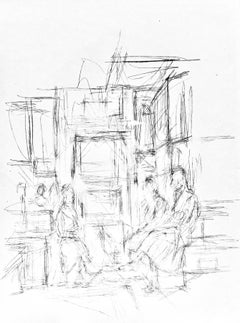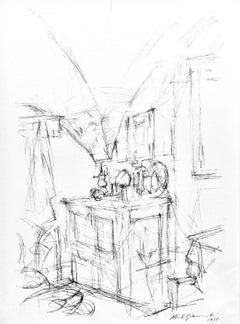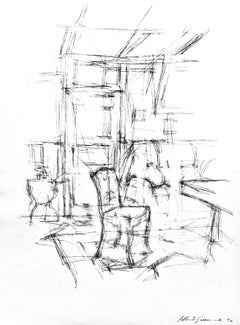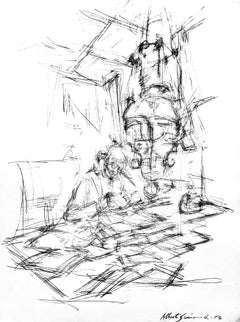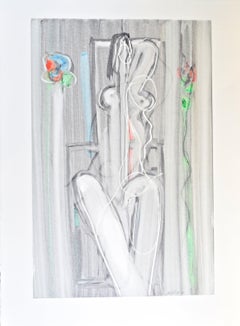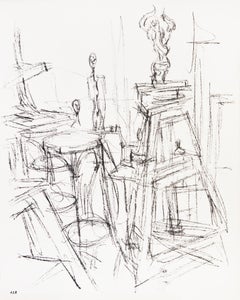Items Similar to Alberto Giacometti, The Studio VII, from Derriere le miroir, 1957 (after)
Want more images or videos?
Request additional images or videos from the seller
1 of 9
Alberto Giacometti, The Studio VII, from Derriere le miroir, 1957 (after)1957
1957
$716
$89520% Off
£545.80
£682.2620% Off
€623.54
€779.4220% Off
CA$1,007.51
CA$1,259.3920% Off
A$1,103.54
A$1,379.4220% Off
CHF 581.01
CHF 726.2720% Off
MX$13,170.37
MX$16,462.9620% Off
NOK 7,404.50
NOK 9,255.6220% Off
SEK 6,768.82
SEK 8,461.0320% Off
DKK 4,659.51
DKK 5,824.3920% Off
About the Item
This exquisite lithograph after Alberto Giacometti (1901–1966), titled L'Atelier VII (The Studio VII), from the folio Derriere le miroir, No. 98, originates from the 1957 edition published by Maeght Editeur, Paris, and printed by Mourlot Freres, Paris, 1957. This work captures Giacometti’s distinctive vision of existential isolation and endurance, transforming the human form into a poetic symbol of resilience and motion.
Executed as a lithograph on velin paper, this work measures 15 x 22 inches, with centerfold as issued. Unsigned and unnumbered as issued. The edition exemplifies the superb craftsmanship of Mourlot Freres, Paris.
Artwork Details:
Artist: After Alberto Giacometti (1901–1966)
Title: L'Atelier VII (The Studio VII), from the folio Derriere le miroir, No. 98
Medium: Lithograph on velin paper
Dimensions: 15 x 22 inches (38.1 x 55.9 cm), with centerfold as issued
Inscription: Unsigned and unnumbered as issued
Date: 1957
Publisher: Maeght Editeur, Paris
Printer: Mourlot Freres, Paris
Condition: Well preserved, consistent with age and medium
Provenance: From the folio Derriere le miroir, No. 98, published by Maeght Editeur, Paris; printed by Mourlot Freres, Paris, 1957
Notes:
Excerpted from the folio (translated from French): Taken from this issue of “Behind the Mirror,” the original edition consisted of examples on velin de Rives. The lithographs were printed in the ateliers of Maeght Editeur, Paris, with texts accompanying Giacometti’s exhibition at Galerie Maeght in 1957.
About the Publication:
Derriere le miroir (Behind the Mirror) was one of the most important art publications of the 20th century, created and published by Maeght Editeur in Paris from 1946 to 1982. Founded by the visionary art dealer and publisher Aime Maeght, the series served as both an exhibition catalogue and a work of art in its own right, uniting original lithographs by leading modern and contemporary artists with critical essays, poetry, and design of the highest quality. Printed by master lithographers such as Mourlot Freres and Arte, Derriere le miroir became synonymous with the artistic vanguard of postwar Europe. Each issue was devoted to a single artist or theme and published to accompany exhibitions at the Galerie Maeght in Paris, featuring works by Pablo Picasso, Henri Matisse, Georges Braque, Joan Miro, Marc Chagall, Alexander Calder, Fernand Leger, and Alberto Giacometti, among others. The publication reflected Maeght’s belief that art should be both accessible and elevated—an ideal realized through its luxurious production values, meticulous printing, and collaboration with the greatest creative minds of its time.
About the Artist:
Alberto Giacometti (1901–1966) was a Swiss sculptor, painter, and draughtsman whose hauntingly elongated figures and existential vision redefined modern art and made him one of the most influential artists of the 20th century. Born in Borgonovo, Switzerland, into an artistic family—his father, Giovanni Giacometti, was a noted Post-Impressionist—he was immersed in art from an early age before studying in Geneva and moving to Paris in 1922, where he became part of the city’s avant-garde alongside Pablo Picasso, Alexander Calder, Salvador Dali, Joan Miro, Wassily Kandinsky, Marcel Duchamp, and Man Ray. In the 1920s and 1930s, Giacometti explored Cubism and Surrealism, creating symbolic and dreamlike sculptures such as Suspended Ball (1930–31) and The Palace at 4 A.M. (1932), which reflected the influence of Dali, Duchamp, and Man Ray. By the 1940s, he abandoned Surrealism to pursue a deeply personal exploration of the human condition, developing his iconic attenuated figures that embodied both fragility and resilience. His signature sculptures—L’Homme qui marche I (Walking Man I), Femme debout, and Le Chariot—expressed the isolation, endurance, and vulnerability of modern existence, echoing the existential philosophy of Jean-Paul Sartre and Simone de Beauvoir. Giacometti’s figures, stripped of mass yet monumental in spirit, symbolized humanity’s search for meaning in a postwar world, while his paintings and drawings—portraits of his brother Diego, his wife Annette, and his friends—captured the psychological depth of perception with trembling, repetitive lines that blurred the boundary between body and soul. His friendships with Picasso, Calder, Miro, and Kandinsky shaped his understanding of form, motion, and space, while his philosophical engagement with Duchamp and Man Ray deepened his inquiry into the nature of reality and perception. Working obsessively in his modest Montparnasse studio, Giacometti pursued art as an existential act—destroying and rebuilding his figures in an endless search for truth. His influence on postwar art was immense, shaping the work of Henry Moore, Francis Bacon, Louise Bourgeois, Lucian Freud, and later contemporary sculptors such as Antony Gormley and Anselm Kiefer. His aesthetic also resonated beyond sculpture, influencing fashion, photography, and architecture through his vision of form, isolation, and proportion. Giacometti’s work is represented in major museum collections including MoMA, the Tate Modern, and the Centre Pompidou, and continues to inspire artists, collectors, and thinkers worldwide. Standing alongside Pablo Picasso, Alexander Calder, Salvador Dali, Joan Miro, Wassily Kandinsky, Marcel Duchamp, and Man Ray, Giacometti remains a towering figure in modern art—a sculptor-philosopher who transformed the human form into a universal symbol of resilience and reflection. His highest auction record was achieved by L’Homme qui marche I (Walking Man I), which sold for $141.3 million at Sotheby’s, London, on February 3, 2010, reaffirming Alberto Giacometti’s enduring legacy as one of the most visionary, profound, and collectible artists in the history of modern art.
Alberto Giacometti L'Atelier VII Derriere le miroir No. 98, Giacometti Mourlot Freres, Giacometti Maeght Editeur, Giacometti velin paper, Giacometti collectible lithograph.
- Creation Year:1957
- Dimensions:Height: 15 in (38.1 cm)Width: 22 in (55.88 cm)
- Medium:
- Movement & Style:
- After:Alberto Giacometti (1901 - 1966, Swiss)
- Period:
- Condition:
- Gallery Location:Southampton, NY
- Reference Number:1stDibs: LU1465216421692
About the Seller
4.9
Platinum Seller
Premium sellers with a 4.7+ rating and 24-hour response times
Established in 1978
1stDibs seller since 2021
1,244 sales on 1stDibs
Typical response time: <1 hour
- ShippingRetrieving quote...Shipping from: Southampton, NY
- Return Policy
More From This Seller
View AllAlberto Giacometti, The Studio III, from Derriere le miroir, 1957 (after)
By Alberto Giacometti
Located in Southampton, NY
This exquisite lithograph after Alberto Giacometti (1901–1966), titled L'Atelier III (The Studio III), from the folio Derriere le miroir, No. 98, originates from the 1957 edition pub...
Category
1950s Modern Abstract Prints
Materials
Lithograph
$716 Sale Price
20% Off
Free Shipping
Alberto Giacometti, The Studio II, from Derriere le miroir, 1957 (after)
By Alberto Giacometti
Located in Southampton, NY
This exquisite lithograph after Alberto Giacometti (1901–1966), titled L'Atelier II (The Studio II), from the folio Derriere le miroir, No. 98, originates from the 1957 edition publi...
Category
1950s Modern Abstract Prints
Materials
Lithograph
$716 Sale Price
20% Off
Free Shipping
Alberto Giacometti, The Chair, from Derriere le miroir, 1954 (after)
By Alberto Giacometti
Located in Southampton, NY
This exquisite lithograph after Alberto Giacometti (1901–1966), titled La chaise (The Chair), from the folio Derriere le miroir, No. 65, originates from the 1954 edition published by...
Category
1950s Modern Abstract Prints
Materials
Lithograph
$716 Sale Price
20% Off
Free Shipping
Alberto Giacometti, The Hearth, from Derriere le miroir, 1954 (after)
By Alberto Giacometti
Located in Southampton, NY
This exquisite lithograph after Alberto Giacometti (1901–1966), titled L’atre (The Hearth), from the folio Derriere le miroir, No. 65, originates from the 1954 edition published by M...
Category
1950s Modern Abstract Prints
Materials
Lithograph
$716 Sale Price
20% Off
Free Shipping
Alberto Giacometti, The Table, from Derriere le miroir, 1954 (after)
By Alberto Giacometti
Located in Southampton, NY
This exquisite lithograph after Alberto Giacometti (1901–1966), titled La table (The Table), from the folio Derriere le miroir, No. 65, originates from the 1954 edition published by ...
Category
1950s Modern Abstract Prints
Materials
Lithograph
$716 Sale Price
20% Off
Free Shipping
Alberto Giacometti, The Studio II, from Derriere le miroir, 1957 (after)
By Alberto Giacometti
Located in Southampton, NY
This exquisite lithograph after Alberto Giacometti (1901–1966), titled L'Atelier II (The Studio II), from the folio Derriere le miroir, No. 98, originates from the 1957 edition publi...
Category
1950s Modern Abstract Prints
Materials
Lithograph
$716 Sale Price
20% Off
Free Shipping
You May Also Like
Untitled
Located in Nuevo Leon, MX
Obra sobre papel
Category
Mid-20th Century Abstract Prints
$500
Figure Miroir
Located in San Francisco, CA
This artwork titled "Figure Miroir" c.1980 is an original lithograph on Arches paper by noted French abstract expressionist artist Francois Rouan, b.194...
Category
Late 20th Century Abstract Expressionist Abstract Prints
Materials
Lithograph
Paris sans fin
By Alberto Giacometti
Located in London, GB
First edition, from the edition of 250 copies on Vélin d’Arches from a total edition of 270; large 4to (42.2 x 32 cm); artist’s signature stamp to limitation page, 150 lithographs after Giacometti, loose as issued in publisher's printed wrappers, glassine wrappers, cloth chemise and slipcase.
Giacometti’s testament to art and modern life in his beloved Paris.
For Tériade it would be a milestone, the last great publication he would see through the press. The two men [Tériade and Giacometti] had maintained a close friendship ever since the Surrealist Years. The one hundred and fifty lithographs are a profoundly interpenetrating view of Giacometti's experience of Paris. He selected the plates to be printed and determined the order of their relationship, numbering each one. The frontispiece shows a nude figure of a woman plunging forward, as though diving into space, and is immediately followed by a quantity of views of city streets, then of interiors familiar to the artist. We come upon views of his studio, of the cafes he frequented, of Annette's apartment in the rue Mazarine and Caroline's in the Avenue du Maine, strangers at cafe tables, passers by, parked automobiles, the towers of Saint-Suplice, bridges across the Seine, The Eiffel Tower. To accompany the hundred and fifty plates, a text of twenty pages was planned, but the artist never got further than a few rough drafts. True, he was a devotee of words, Paris sans fin, however, said too much to the eye to be in need of other symbols (James Lord...
Category
1960s Art Nouveau Figurative Prints
Materials
Lithograph
Alberto Giacometti - Portrait
By Alberto Giacometti
Located in Collonge Bellerive, Geneve, CH
Alberto Giacometti - Portrait
Engraving (after the drawing)
Published in the deluxe art review, XXe Siecle
1956
Dimensions: 32 x 24 cm
Publisher: G. di San Lazzaro.
From the art Re...
Category
1950s Modern Abstract Prints
Materials
Engraving
Untitled
Located in Nuevo Leon, MX
Obra sobre papel
Category
Mid-20th Century Abstract Prints
$500
Picasso, La Bonne dans l'Atelier de Sculpture (after)
By Pablo Picasso
Located in Fairfield, CT
Artist: After Pablo Picasso (1881-1973)
Title: La Bonne dans l'Atelier de Sculpture (after Bloch 184)
Year: 1992
Medium: Reproduced from the original edition using the grain Autotype...
Category
1990s Cubist Nude Prints
Materials
Lithograph
$3,400 Sale Price
20% Off
